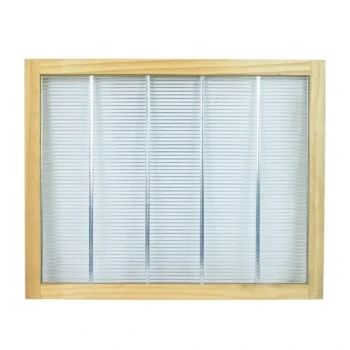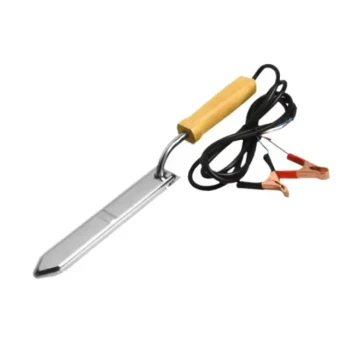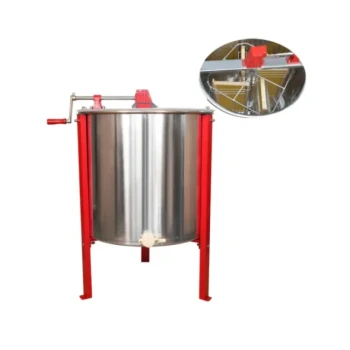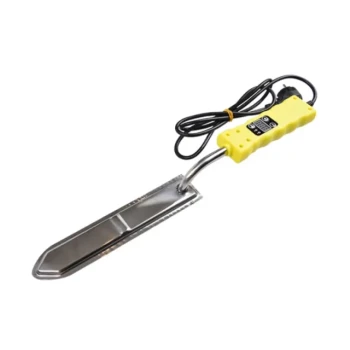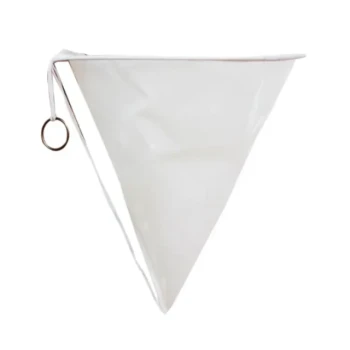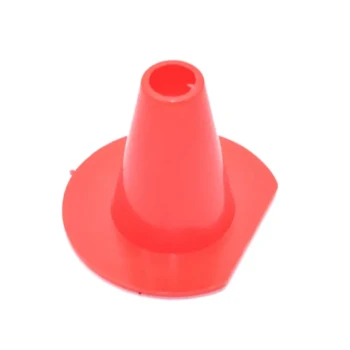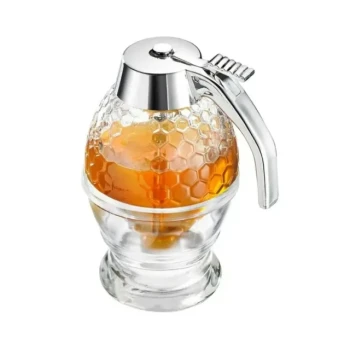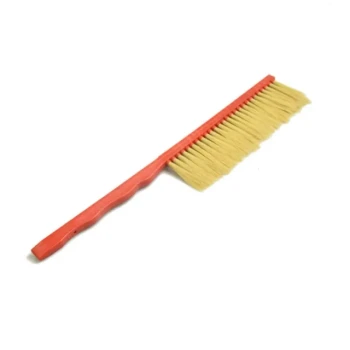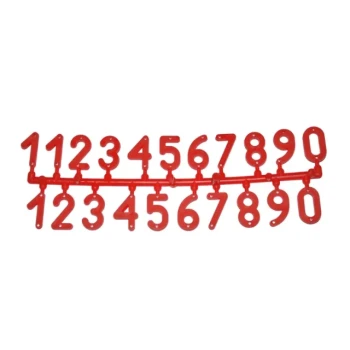In beekeeping, a queen excluder is a selective barrier that confines the queen bee to a specific area of the hive. This perforated sheet, typically a metal or plastic grid, has openings that are large enough for worker bees to pass through but too small for the larger queen and drones. Its primary purpose is to separate the brood nest, where the queen lays eggs, from the honey supers, where bees store surplus honey.
The decision to use a queen excluder is a strategic choice in hive management. It offers significant control and convenience for the beekeeper, but this control comes with potential trade-offs in honey production efficiency.
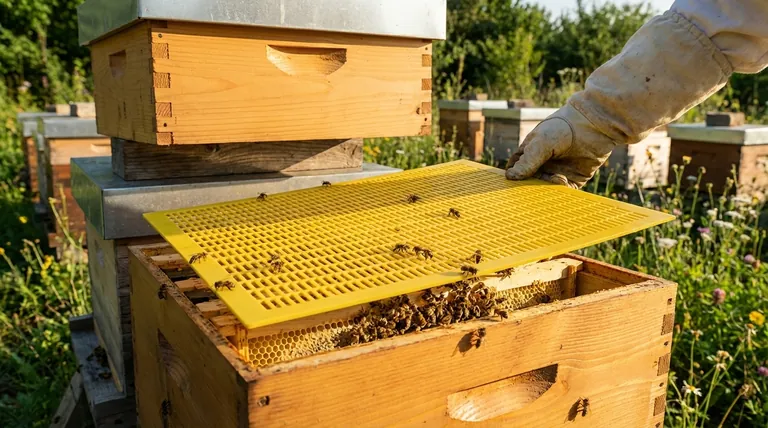
The Core Principle: Managing Hive Space
A beehive is organized into distinct zones. The queen excluder is a tool that allows a beekeeper to enforce and manage this organization with precision.
How It Works
The functionality of a queen excluder is based on simple size differences. The gaps in the grid are consistently spaced at around 4.2 millimeters.
Worker bees can easily move through these openings, but the larger thorax of a queen bee and male drones prevents them from passing.
Separating Brood from Honey
In a typical vertically stacked Langstroth hive, the lower boxes are designated as the brood chamber. This is where the queen lays eggs and the colony raises its young.
The boxes placed above the brood chamber are called honey supers. A queen excluder is placed between the top brood box and the bottom honey super to ensure the queen cannot travel upward and lay eggs where honey is meant to be stored.
The Goal: Pure Honey Supers
The direct result of using an excluder is that the frames in the honey supers contain only honeycomb filled with honey. This makes the harvesting process much cleaner and simpler, as there is no risk of finding eggs, larvae, or pupae mixed in with the honey.
Key Benefits of Using a Queen Excluder
For many beekeepers, the advantages of hive control and simplified management make the excluder an essential piece of equipment.
Simplified Honey Harvest
This is the most common reason to use an excluder. By ensuring honey supers are free of brood, beekeepers can harvest frames without worrying about damaging the next generation of bees or contaminating the honey.
Efficient Hive Inspections
When you need to find the queen—for health checks, mite counts, or requeening—an excluder dramatically narrows your search. You know with certainty that she is located in the boxes below the excluder, saving significant time and disruption to the colony.
Advanced Population Control
In certain situations, limiting the queen's laying space can be a deliberate management strategy. It can help control the overall colony population and defensiveness, a technique sometimes used in areas with Africanized bees. Confining the brood nest may also assist in managing Varroa mite populations by concentrating the brood in a smaller, more manageable area.
Understanding the Trade-offs and Criticisms
Not all beekeepers use queen excluders. The debate over their use highlights a fundamental trade-off between control and natural colony behavior.
The "Honey Excluder" Debate
Some beekeepers refer to this tool as a "honey excluder" instead. This nickname stems from the belief that the barrier can slow down worker bees as they move between the brood nest and the honey supers.
Potential for Reduced Productivity
The core criticism is that the excluder creates a bottleneck. Worker bees may be more reluctant to cross the barrier, which can potentially reduce the speed at which they build comb and fill the honey supers, leading to a smaller honey harvest.
Increased Swarm Potential
By physically limiting the space available for the queen to lay, the brood nest can become congested more quickly. This condition, known as being "honey bound" or "brood bound," is a primary trigger for the colony to swarm. A beekeeper using an excluder must be diligent about managing space in the brood chamber to prevent this.
Making the Right Choice for Your Apiary
The decision to use a queen excluder depends entirely on your beekeeping philosophy and specific goals.
- If your primary focus is clean honey and simple management: Use a queen excluder. It guarantees brood-free honey supers and makes finding the queen much easier, which is ideal for hobbyists and beginners.
- If your primary focus is maximizing honey production: You might consider not using an excluder. This requires more advanced hive management skills to keep the queen from laying in the honey supers, but it removes any potential bottleneck for the worker bees.
- If your primary focus is queen rearing or frequent inspections: An excluder is an invaluable tool. The time saved by knowing exactly which boxes contain the queen cannot be overstated.
Ultimately, the queen excluder is a strategic tool; understanding its function and trade-offs empowers you to manage your hives with intention.
Summary Table:
| Feature | Purpose | Key Consideration |
|---|---|---|
| Brood-Free Honey | Ensures honey supers contain only honey for easy harvest. | Simplifies management for hobbyists and beginners. |
| Queen Location | Confines the queen to the brood chamber for efficient inspections. | Saves significant time during hive checks. |
| Population Control | Limits the queen's laying space to manage colony size/defensiveness. | A strategic tool for advanced management techniques. |
| Potential Drawback | Can create a bottleneck, potentially slowing honey production. | Important consideration for maximizing harvest yields. |
Ready to optimize your hive management?
At HONESTBEE, we supply commercial apiaries and beekeeping equipment distributors with the high-quality tools needed for success, including durable queen excluders. Our wholesale-focused operations ensure you get the reliable equipment your business depends on.
Let's discuss how our supplies can support your apiary's goals. Contact our team today for expert advice and competitive pricing.
Visual Guide
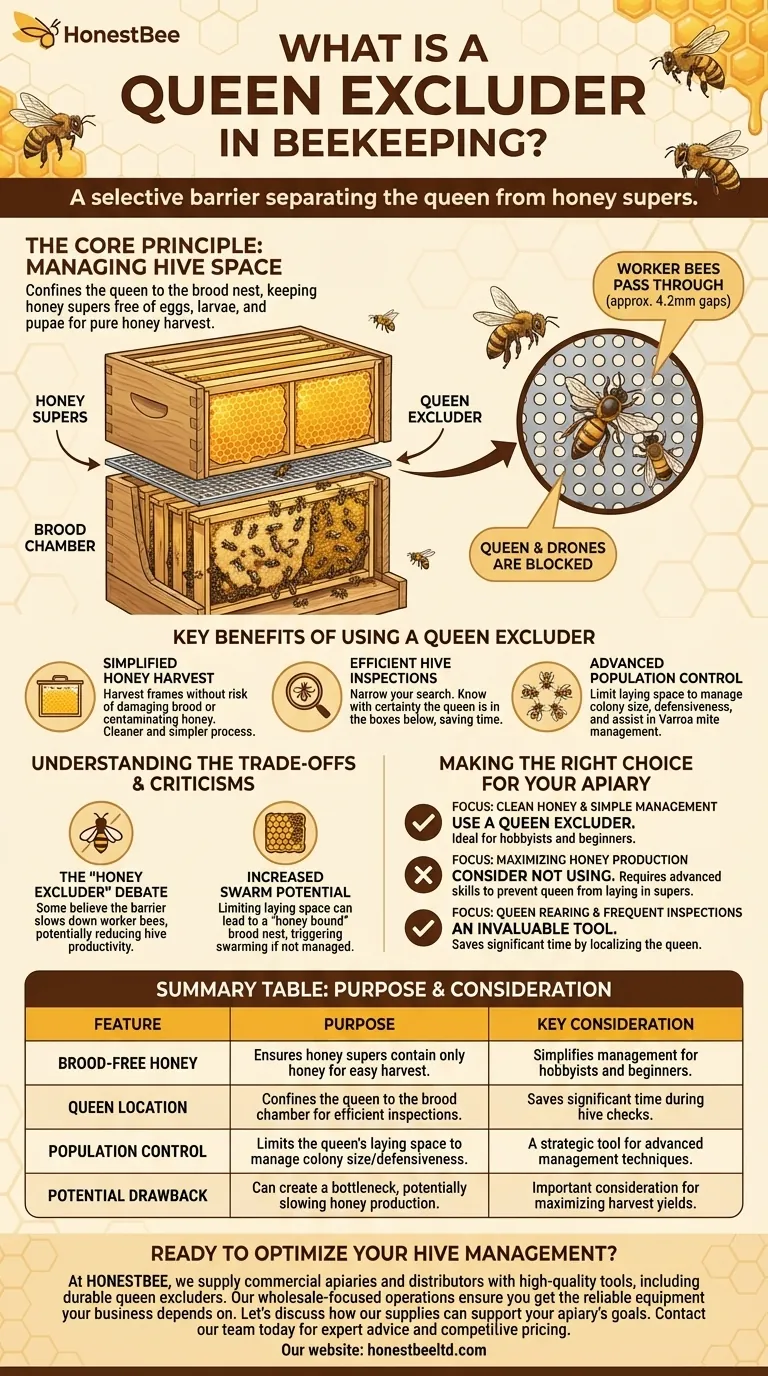
Related Products
- Professional Plastic Queen Excluder for Modern Beekeeping
- High Performance Plastic Queen Excluder for Beekeeping and Apiary Management
- Premium Wood Framed Metal Wire Queen Bee Excluder
- Metal Queen Bee Excluder for Beekeeping
- 8-Frame Electric Self-Reversing Honey Extractor Spinner for Commercial Honey Extraction Equipment
People Also Ask
- What is the primary function of a queen excluder in beekeeping? Control Hive Layout for Efficient Honey Harvesting
- What are the main advantages of using a queen excluder in beekeeping? Simplify Hive Management & Harvest
- What are the pros of using a queen excluder? Boost Hive Control & Honey Quality
- What are the pros of using queen excluders? Boost Honey Production & Hive Efficiency
- How does a queen excluder work? Master Hive Management for Pure Honey Harvests


